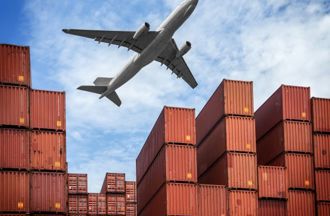
London - The International Air Transport Association (IATA) and Labelmaster, and Hazardous Cargo Bulletin, announced the results of their seventh annual 2022 Global Dangerous Goods Confidence Outlook. The survey results underscored the need for greater process consistency, increased automation and more reliable data to facilitate the safe and secure transport of dangerous goods (DG).
“Global supply chain disruptions have put even more pressure on those professionals and companies responsible for shipping goods safely and compliantly. While there are many areas of improvement over the last year, the survey demonstrated widespread awareness of the need to improve DG processes, training, technology and infrastructure,” said Robert Finn, Vice President, Labelmaster.
“The air transport industry handles over 1.25 million DG shipments per year. The growth of e-commerce and proliferation of lithium batteries in global supply chains are two indicators that the number of DG shipments will grow. To handle them safely, we must further improve compliance with global standards. Almost any item can be shipped safely, provided we have well-trained professionals following globally agreed standards and supported by the right technology and infrastructure,” said Nick Careen, IATA’s Senior Vice President Operations, Safety and Security.
Key Findings and Recommendations
There is a solid foundation for compliance.
- Nearly a quarter of those (24%) surveyed said DG compliance is a competitive advantage
- Another 37% said their organizations go beyond what is required by regulation, while 39% only adhere to minimum requirements
There is awareness that critical improvements are needed.
- Only 25% believe their organization’s current infrastructure is equipped to meet future needs
- 82% believe their organization’s DG investment cannot support future regulations or supply chain changes
Confidence in key aspects of DG handling hovered around 50%, pointing to areas for improvement.
- 64% reported confidence in the ability to handle reverse logistics
- 56% said they received fast/quality responses from regulatory authorities
- 55% were confident in the reliability of master data
- 55% believed that technology was being leveraged sufficiently to support safe shipments
- 53% said that the DG rules were easy to apply
- 52% have the requisite budget
- 48% believed there was sufficient C-suite support
- 48% noted sufficient regulatory enforcement of DG rules
- 48% were confident in their organization’s DG compliance
Most respondents (67%) indicated that their organization was prepared to handle DGs at most or all of their locations. Top priorities were identified as:
- Automating processes (61%)
- Harmonizing processes across supply chain (59%)
- Accessing complete and accurate data (52%)
- Obtaining special permits, letters of interpretation, etc. (48%)
- Ensuring training is effective and up to date (45%)
Four key recommendations come from the survey:
- Technology: Automate DG operations and establish reliable processes across the supply chain.
- Training: Utilize gamification or 3D training experiences to better train and recertify employees.
- Packaging: Utilize new packaging solutions to further improve efficiency, safety and compliance.
- Regulations: Use digital regulatory materials to keep DG professionals up-to-date.
“The survey shows that it is critical for organizations to assess their DG operations and identify processes, infrastructure gaps and areas of opportunities. The good news is that making meaningful improvements does not have to be difficult or require significant investment,” said Finn.
“Companies do not have to reinvent the wheel. IATA has digital solutions to improve compliance. DG AutoCheck, for example, automates the complex and time-consuming manual task of checking that each shipper’s declaration is compliant and the package(s) are correctly, marked, labelled and packaged, which improves efficiency. This streamlines processes and enhances safety.” added Careen.
> Learn more about the state of the global DG supply chain - infographic (pdf)
About the Survey
Sponsored by Labelmaster, the International Air Transport Association (IATA) and Hazardous Cargo Bulletin, 439 DG professionals from around the world were surveyed about how their organization’s DG management operations changed over the past year and which areas are most problematic. The survey was conducted between 12 May and 30 June 2022.
About Labelmaster
For more than five decades, Labelmaster has been the go-to source for companies – big and small – to navigate and comply with the complex, ever-changing regulations that govern the transport of dangerous goods and hazardous materials. From hazmat labels and UN-certified packaging, hazmat placards and regulatory publications, to advanced technology and regulatory training, Labelmaster’s comprehensive offering of industry-leading software, products, and services helps customers remain compliant with all dangerous goods regulations, mitigate risk and maintain smooth, safe operations. Labelmaster's dedication to supporting its customers' operational and compliance needs is enhanced through its unmatched industry expertise and consulting services, which serve as a valuable resource for customers to answer difficult and commonplace regulatory questions. Whether you're shipping hazardous materials by land, air, or sea, Labelmaster is your partner in keeping your business ahead of regulations and compliant every step of the way. To learn more, visit www.labelmaster.com.
Contact:
Stephen Dye
stephen@outlookmarketingsrv.com
About IATA
IATA (International Air Transport Association) represents some 290 airlines comprising 83% of global air traffic. You can follow IATA at twitter.com/iata for announcements, policy positions, and other useful industry information.
For more information, please contact:
Corporate Communications
Tel: +41 22 770 2967
Email: corpcomms@iata.org

